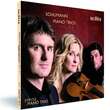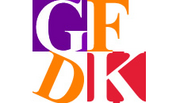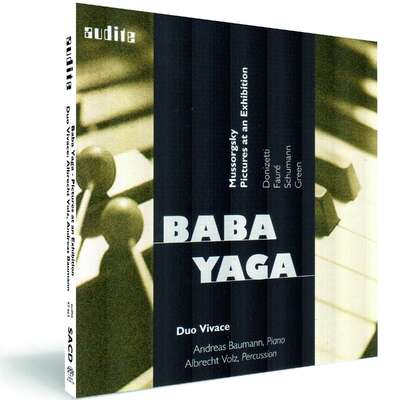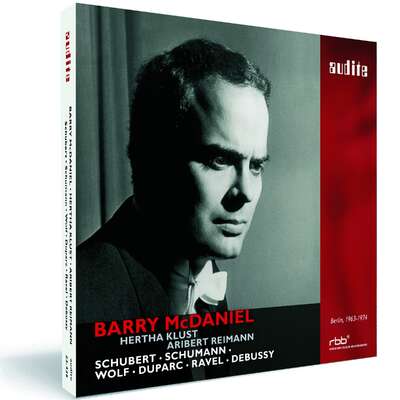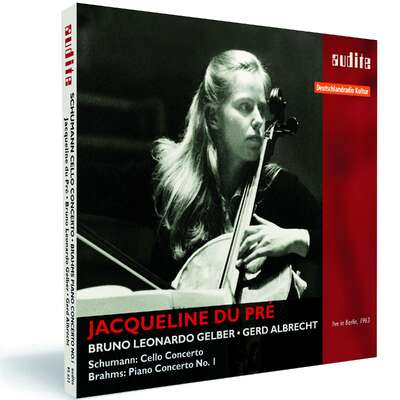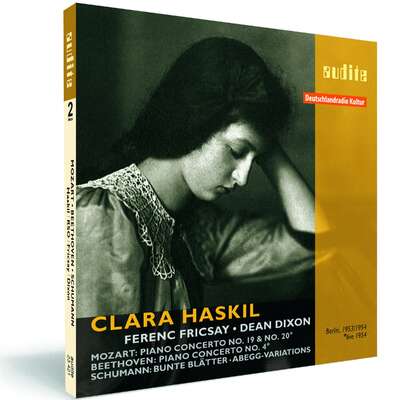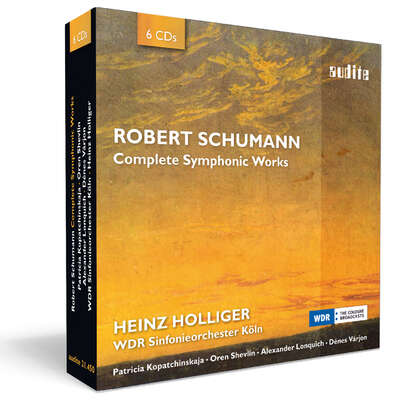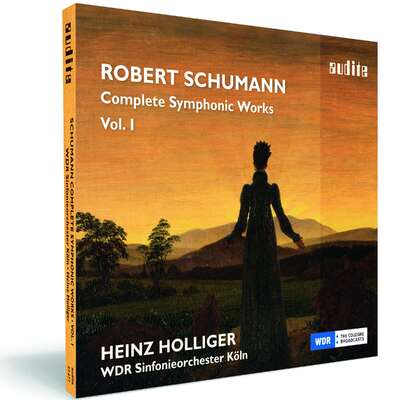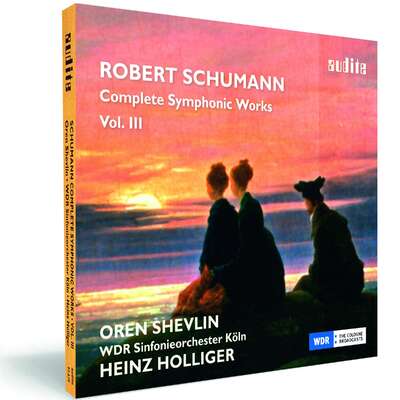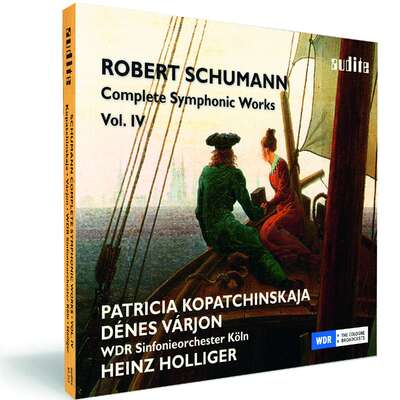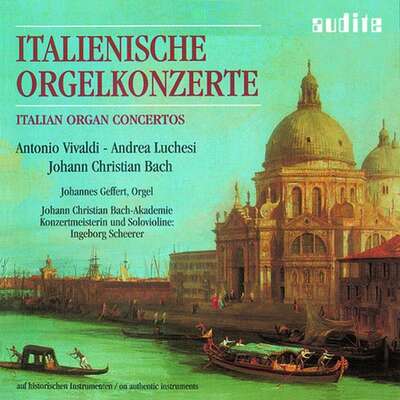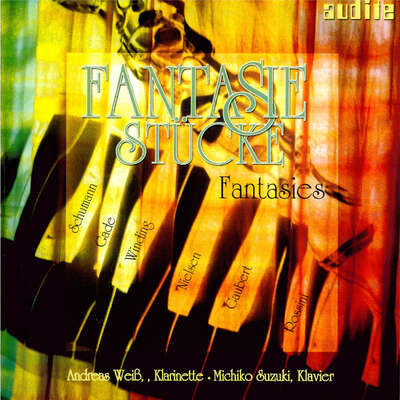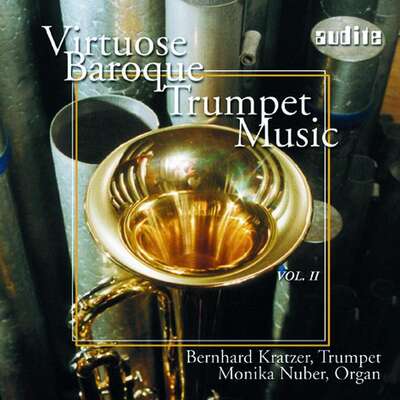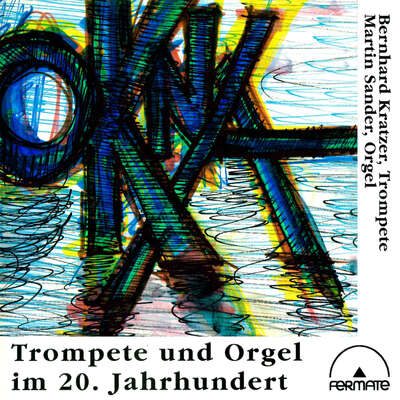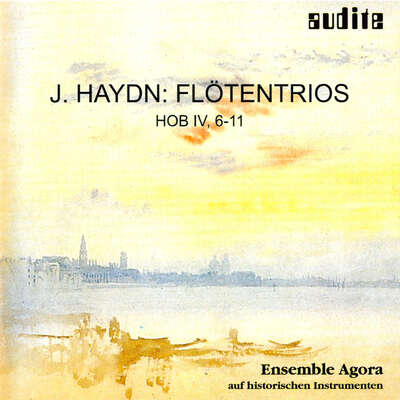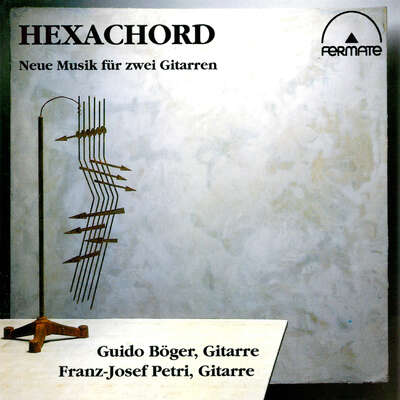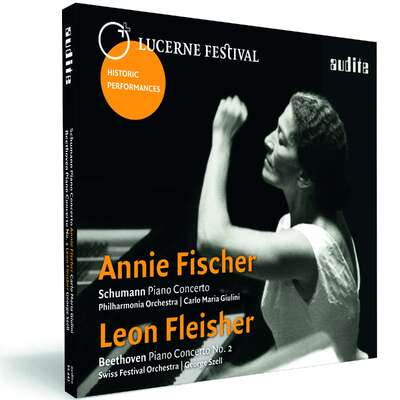
Composed in 1847, Robert Schumann’s Piano Trios Op. 63 and Op. 80 are consummate examples of the genre. The Swiss Piano Trio proves that these are unjustly neglected masterpieces of nineteenth century chamber music.more
Composed in 1847, Robert Schumann’s Piano Trios Op. 63 and Op. 80 are consummate examples of the genre. The Swiss Piano Trio proves that these are unjustly neglected masterpieces of nineteenth century chamber music.
Details
| Robert Schumann: Piano Trios Nos 1 & 2 (Op. 63 & 80) | |
| article number: | 92.654 |
|---|---|
| EAN barcode: | 4022143926548 |
| price group: | ACX |
| release date: | 3. June 2011 |
| total time: | 58 min. |
Informationen
Following the successful release of piano trios by Mendelssohn, audite now presents its second recording of the Swiss Piano Trio, featuring Robert Schumann’s piano trios Op. 63 and Op. 80 in SACD format.
Composed in 1847, these two works represent significant contributions to the history of the genre. It is the delicate and demanding task of the performers to make audible the rich nuances of this music which interlink general and private, historical and topical references and thoughts, thus addressing the connoisseur. The interpretation of the Swiss Piano Trio proves that these works are unjustly neglected masterpieces of nineteenth century chamber music.
A further SACD containing Schumann’s third piano trio Op. 110 alongside the Fantasiestücke Op. 88 and the piano trio Op. 17 by Clara Schumann is scheduled to be released at a later date.
The Swiss Piano Trio with Martin Lucas Staub (piano), Angela Golubeva (violin) and Sébastien Singer (cello) has won prizes at several competitions, including the International Chamber Music Competition Caltanissetta and the Austrian Johannes Brahms Competition. Since its foundation in 1998, the ensemble has enjoyed a busy performing schedule with concerts in over thirty-five countries. The Trio performs chamber music in the most prestigious concert halls across the globe; and as an ensemble of soloists, the three musicians regularly appear with renowned orchestras. Numerous recordings for radio, television broadcasts and on disc document the artistic activities of the ensemble.
Reviews
Musica | febbraio 2012 | Stefano Pagliantini | February 1, 2012
Un’esecuzione genuina e coinvolgente, fresca e partecipe quella che offreMehr lesen
American Record Guide | 01.11.2011 | Paul L. Althouse | November 1, 2011
Even though they never have gripped the imagination of music lovers, the Schumann trios—these two plus a later one—are certainly worthy of theMehr lesen
The two recorded here were written in the same year (1847), but show different character. The first is rather Beethovenian in its exhaustive use of limited materials in a fairly severe style; but the second, written in three days, is lighter and less impassioned. The second—which, by the way, was preferred by Clara—even quotes Schumann songs and works of Beethoven and Mendelssohn. Both pieces have strong advocates in the Swiss Piano Trio, which plays with great spirit and the right level of bravura. The performances are quite brisk, but never seem too fast, and balances are fine.
A very good recording, then, though some may prefer the richer, old-world feel of the Vienna Brahms Trio or one of the classic recordings mentioned above.
Record Geijutsu | October 2011 | October 1, 2011
japanische Rezension siehe PDF!Mehr lesen
Fanfare | Issue 35:1 (Sept/Oct 2011) | Steven E. Ritter | September 1, 2011
Schumann did not start his chamber music efforts in earnest until immediately following the “song” year of 1840, though until that point he hadMehr lesen
Because of this look back, and no doubt a real and genuine feeling of inferiority in the chamber realm, the Beethovenian extremes are avoided in his chamber music and a new, raw, and laid-bare sense of contrapuntal activity is present in almost all of his work in this area. Even then it did not appear to be enough—Schumann was never to be known for his small-ensemble music during his lifetime. Only in the last century was this music to make a comeback. The Schumann year (2010) brought a renewed interest in this work, though the music had been trending positive for some time before. Now his string quartets and violin sonatas are becoming the standards they should be, along with the Piano Quintet and Quartet, and the miscellaneous short single-instrument and piano character pieces. But it was only after Schumann created these that he decided to turn to the piano trio as a medium.
Clara in a way paved the way. Her effort was more than respectable, and perhaps broke through some creative block that Schumann was harboring toward the form. Couple that with a desire to find a way to broaden her concert repertoire—the Romantics were far more practical in this regard than we give them credit for—and he was ready to spin off three works that occupied him in 1847 (the two on this disc) and 1851 (op. 110).
The music is not easy—it doesn’t grab you the way a lot of his other music does; in fact, I might be one of the few who feels that Brahms’s chamber music doesn’t grab you either, for the most part. Both of these composers have hidden secrets in their chamber music that take a lot of exposure in order to grasp the essence, and both composers said very different things in the chamber realm than in other mediums. This is especially true for Schumann, being a spurt writer, and whose overall message/communicative ability was closely tied in with the musical medium he was involved with at the time. With the piano trios it is first and foremost a condensing of motives and great variance in harmonic interplay. One must revel in the whole instead of simply latching on to a great melody. This is especially true of the First Trio; the Second is more relaxed, so that Clara thought it a work that would “completely warm and delight my soul from beginning to end.” In fact this Second Trio integrates references to his own song material, and achieves amiability not so obvious in the more terse and intense First.
I am assuming that the Swiss Piano Trio will most likely complete the set in a future Volume 2 (maybe with Clara’s included—please?). As it stands, this leaps to the top of my (admittedly short) list of recommended versions of these two pieces. The old standby is the Beaux Arts Trio, maybe not the most perfect Schumann interpreters, but cheap and complete, and really tuned into the idiom, while Eric Le Sage’s ongoing series of the composer’s piano and chamber music (with Gordan Nicolitch and Christophe Coin) continues to impress me, as evidenced in my review in Fanfare 34:1. The youngish members of the Swiss Piano Trio (founded 1998) are about the age of Schumann when he penned these works, and their approach is one of considerable abandon, at times fiercely digging into the music while never losing either control or tonal luster. I felt as though I was learning a lot about music that I already know so well while listening to this recording, and Audite’s fabulous SACD surround sound puts them right in front of you. An essential recording.
Westdeutsche Allgemeine Zeitung | Dienstag, 23. August 2011 | hb | August 23, 2011 Klassik
Obwohl Schumanns Kammermusik zentrale Bedeutung zukommt, kann man – vomMehr lesen
Thurgauer Zeitung
| 17. August 2011 | Martin Preisser | August 17, 2011
Pünktlich zum Festivalstart eine neue Schumann-CD
Das Schweizer Klaviertrio doppelt nach: Nach Mendelssohn legt es eine fulminante Aufnahme von zwei Schumann-Trios vor
Der Thurgauer Pianist Martin Lucas Staub ist künstlerischer Leiter desMehr lesen
Tagblatt Online
| Mittwoch, 17. August 2011 | Martin Preisser | August 17, 2011
Pünktlich zum Festivalstart eine neue Schumann-CD
Das Schweizer Klaviertrio doppelt nach: Nach Mendelssohn legt es eine fulminante Aufnahme von zwei Schumann-Trios vor
Der Thurgauer Pianist Martin Lucas Staub ist künstlerischer Leiter desMehr lesen
RBB Kulturradio | 12.08.2011 | Imke Griebsch | August 12, 2011
Robert Schumann: Klaviertrios 1 und 2
Das Schweizer Trio geht aufs Ganze und hat eine wunderbare CD eingespielt
Robert Schumanns Kammermusik steht immer noch zu sehr im Schatten seiner Klavierwerke, Lieder und Sinfonien. Dabei hat Schumann auf dem Gebiet derMehr lesen
Seltene, geheime und edle Seelenzustände
Für die klassische Klaviertrio-Besetzung Violine, Violoncello und Klavier hat Schumann insgesamt vier Werke geschrieben: Die Fantasiestücke op.88 sowie drei Klaviertrios. Das Schweizer Klaviertrio (1998 gegründet, mit Sitz in Winterthur) hat nun damit begonnen, alle Stücke einzuspielen. Die erste CD liegt vor, darauf zu hören sind das Klaviertrio Nr. 1 d-Moll und das Klaviertrio Nr. 2 F-Dur. Diese Stücke hat Schumann 1842, in seinem so genannten „Kammermusik-Jahr“ unmittelbar hintereinander komponiert. In ihnen zeigt er sich nicht nur als Revolutionär, sondern auch als Poet. Schumann selbst hat die Musik einmal als „höhere Potenz der Poesie“ definiert und die Poesie bestand für ihn darin „seltene, geheime und edle Seelenzustände“ auszudrücken.
Ungestümes und zupackendes Spiel
Vor allem im d-Moll-Trio, das in einer „Zeit düsterer Stimmungen“ entstanden war, hat Schumann seine verschiedenen Seelenzustände in Töne gesetzt. So macht sich im 1. Satz eine rastlose, vorwärts drängende Unruhe breit, die von schroffen Akkorden und kurzem Innehalten unterbrochen wird. Das Schweizer Klaviertrio nimmt die Vortragsbezeichnung wörtlich und spielt die aufwühlenden, bewegten Passagen „Mit Energie und Leidenschaft“. Die ungestüme und zupackende Spielweise (bei kräftigem Akkordspiel klirrt schon mal der Geigenbogen) passt wunderbar zur poetischen Unberechenbarkeit und stürmischen Leidenschaftlichkeit von Schumanns Musik. Rhythmische Tücken werden mit Leichtigkeit gemeistert und scheinen die Musiker in ihrem herrlich ungezähmten Spiel nur noch anzustacheln. Umso stärker wirken danach die fahlen sul ponticello gespielten Streicherstimmen über den gläsernen und eigentümlich starren Klavierakkorden. Im langsamen dritten Satz des d-Moll-Trios beweisen die Schweizer klanglichen Feinsinn: die drei Stimmen sind perfekt ausbalanciert, jede Nuance ist perfekt dosiert, jeder Akzent sitzt, und in ihrem Zusammenspiel sind die Musiker absolut instinktsicher.
Anstrengung, die sich lohnt
Das freundlichere und etwas leichtfüßigere F-Dur-Trio interpretieren sie mit musikantischer Frische und einem gutem Gespür für die Stimmführung (die kanonisch-kontrapunktische Struktur des 4. Satzes zeigt, was Schumann von seinem großen Vorbild Bach gelernt hat). Das Tolle an dieser CD ist: Das Schweizer Klaviertrio geht aufs Ganze, sein Spiel wirkt spontan und unheimlich mitreißend. Der Hörer gerät in einen Sog, dem er sich nicht entziehen kann. Das kann mitunter auch anstrengend sein. Aber die Anstrengung lohnt sich!
Ensemble - Magazin für Kammermusik | 4-2011 (August / September 2011) | Robert Nemecek | August 1, 2011 Energisch und pointiert
Schumanns Klaviertrios stehen bis heute im Schatten der Trio-KompositionenMehr lesen
www.SA-CD.net | July 25, 2011 | Adrian Cue | July 25, 2011
I was not familiar with the Swiss Piano Trio. This is their secondMehr lesen
Gesellschaft Freunde der Künste | 22.07.2011 | July 22, 2011 Musik Klassik: Swiss Piano Trio - Klaviertrios 1 Op.63 & 2 Op.80 - Kammermusikliteratur des 19. Jahrhunderts
Nach der erfolgreichen Veröffentlichung der Mendelssohn-Klaviertrios legt audite nun das zweite Album mit dem Schweizer Klaviertrio vor. Die SACDMehr lesen
Die Interpretation des Schweizer Klaviertrios demonstriert, dass es sich bei dieser Musik um Meisterwerke der Kammermusikliteratur des 19. Jahrhunderts handelt, die zu Unrecht nur selten im Konzertsaal erklingen. Das dritte Klaviertrio op. 110 wird zu einem späteren Zeitpunkt zusammen mit den Fantasiestücken op. 88 und dem Klaviertrio op. 17 von Clara Schumann auf einer weiteren SACD veröffentlicht.
Das Schweizer Klaviertrio mit Martin Lucas Staub (Klavier), Angela Golubeva (Violine) und Sébastien Singer (Violoncello) ist Preisträger zahlreicher Wettbewerbe wie z. B. dem Internationalen Kammermusikwettbewerb Caltanissetta oder dem österreichischen Johannes-Brahms-Wettbewerb. Seit seiner Gründung 1998 führte intensive Konzerttätigkeit das Ensemble in mehr als 40 Länder.
Das Trio tritt in Kammermusikkonzerten in den großen Konzertsälen der Musikzentren auf, als Solistenensemble konzertieren die drei Musiker regelmäßig mit renommierten Orchestern. Radio- und Fernsehaufnahmen sowie CD-Einspielungen dokumentieren das künstlerische Schaffen des Ensembles.
International Record Review | July/August 2011 | John Warrack | July 1, 2011
An exceptionally good programme essay for this disc by Wolfgang Rathert points to the problems that lurk in wait for the performers in Schumann'sMehr lesen
The Second Trio is in some ways even more elliptical, and if Mendelssohn is again largely the inspiration in the first movement, here the material is much more personal. Rathert points out the importance of the song allusions which Schumann incorporates: the subtle manner in which out of a previous theme there emerges 'mention' of the song 'Intermezzo' in the Eichendorff Liederkreis praising the portrait of the beloved ('Dein Bildnis') and its answer at the end of the third movement from Frauenliebe und -Ieben, as the gesture of love is returned from the woman to the man. In this subtly allusive music, one cannot be sure whether or not there is perhaps a further Eichendorff 'Dein Bildnis' reference in the slow movement, at any rate a melodic line drawn from it. It is fascinating music, played here with great perception, and with the suitably outward virtuosity indeed concealing much inward thoughtfulness.
Pizzicato | N° 214 (6/2011) | ge | June 1, 2011
Diese Einspielung soll der Start in eine Gesamtaufnahme von Schumanns Trios sein – ein Vorhaben, bei dem es noch vorhandenes Potenzial zu nutzenMehr lesen
Rondo | Nr. 681 / 28.05. - 03.06.2011 | Michael Blümke | May 28, 2011
Was für den Kritiker gilt, gilt ebenso für den CD-Käufer: Man soll sichMehr lesen
